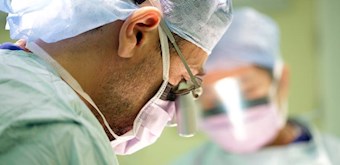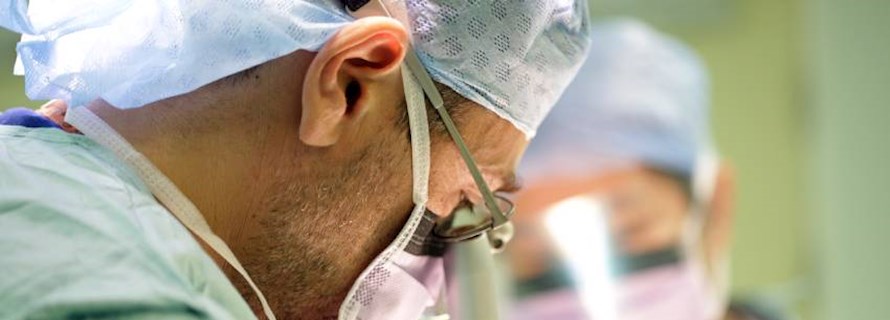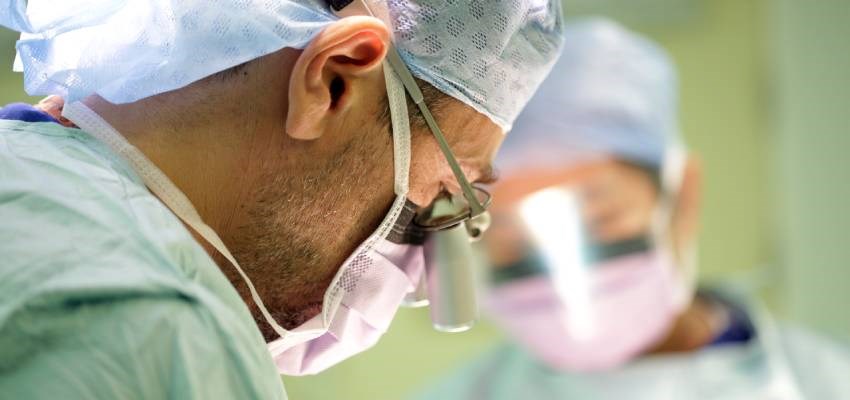Correction of brachial plexus injuries in children
Injuries to the brachial plexus during birth
Our expert surgeon, Mr Marco Sinisi carries out corrective realignment surgery for brachial plexus injuries in children
Surgery for brachial plexus palsy
The brachial plexus is a group of nerve fibres stemming from the spine and through the neck. If pressure is applied to the baby's head during delivery, these nerves can become damaged causing complete paralysis and weakness.
Left untreated, this condition can cause shoulder abnormalities during the growth of the child. This is because the arm bone isn't fitting the shoulder socket (glenoid). This means that the head doesn't sit properly in the socket and this must be corrected to avoid progressive deterioration and improve function.
Need to know
-
What happens during correction surgery? icon plus
This procedure is performed under general anaesthetic, so your child will be asleep throughout. A cut is made at the front and if needed, at back of the shoulder (osteotomy) so the surgeon can access the joint.
This releases the tendons and the head is put back into the socket. If the socket is deficient at the back, the shoulder blade (scapula) is remodelled in order to contain the head. The child is often given a plaster jacket to wear for a few weeks in order to protect the surgery. -
How to prepare icon plus
Your consultant will explain the procedure and answer any questions you have. In the week before surgery, it’s important that your child stays healthy. Let your consultant know if your child has recently had a cold or a sore throat, as surgery may need to be postponed to reduce the risk of complications.
Because general anaesthetic is used during the procedure, your child may need to fast for several hours before the operation. Your consultant will tell you how long they should avoid eating and drinking. Like all procedures, there may be some risks and side effects. Your consultant will explain these to you. -
After surgery icon plus
After the child has healed from the procedure and the cast has been removed, they will need intensive physiotherapy to improve the function and to learn how to move the shoulder. This will take several weeks/months.
You will have regular follow-up appointments with your consultant, who will monitor your child's progress with regular follow-ups. They will be happy to answer any questions and address any concerns you might have.
Mr Marco Sinisi - Peripheral Nerve Specialist
At HCA Healthcare UK, we work with leading consultants to enable access to the the latest techniques and treatment.
Mr Marco Sinisi is our lead consultant for Peripheral Nerve Injuries based at The Wellington Hospital. Mr Sinisi has a comprehensive knowledge of nerve injuries and has experience in a wide range of nerve problems from trauma through to sports injuries. He is experienced in managing complex nerve conditions as well as performing complex nerve operations.




Our locations
From complex nerve surgery to diagnostic tests and procedures, we provide exceptional nerve injury care for adults and children across our network of hospitals, outpatient centres and specialist clinics.
-
Peripheral Nerve Injury (PNI) Unit
The PNI Unit at The Wellington Hospital
Wellington Place
London NW8 9LE
-
The Wellington Hospital Elstree Waterfront
The Waterfront Business Park
Beaufort House, Elstree Road
Elstree WD6 3BS
Book a peripheral nerve appointment
We're happy to help you make an appointment with Mr Marco Sinisi. We can also make imaging and outpatient physiotherapy appointments for you.
Call us today
020 7079 4344